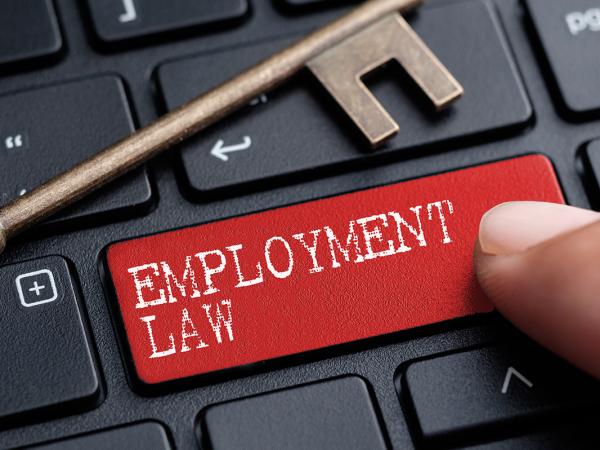Tax status: guidance for employers
When you hire someone, for tax purposes you need to understand whether the law sees them as your employee or sees them as self-employed. If they are your employee then you have important responsibilities, including deducting tax and National Insurance from their wages and paying the money over to HM Revenue & Customs (HMRC). If they are genuinely self-employed, then you don’t need to do this. But treating someone as self-employed when they are, in fact, an employee, can have serious consequences.

Content on this page:
What tax status is
Tax status means whether the individual you are taking on is employed or self-employed for tax purposes.
‘Status’ is also important for employment law rights, but status for employment law is not the same as for tax. You must look at the individual’s status for tax and employment law separately as they will not necessarily be the same. See our employment law section for more information about status and employment law.
The importance of tax status
Tax status is very important because the calculation of income tax and National Insurance contributions for those who are employed and those who are self-employed is different. If tax status is wrong, it is likely that the wrong amount of tax and National Insurance contributions are being paid in the wrong way and at the wrong time.
Tax status also affects how you should pay your worker and whether or not you have to pay any employer National Insurance contributions as a consequence of having an employee.
If you make the wrong decision about someone’s tax status, it may mean that the worker is incorrectly classified for other purposes. This can lead to wide consequences for both you and your worker.
The difference between being employed and self-employed
Employed status
A person who is employed operates under a contract of service (that is, they work for someone else – their employer). For more information about contracts of service, see the heading ‘How to decide someone’s tax status’ below.
If the person you have taken on has employed status, you will be their employer and they will be your employee. You will most likely have a formal contract of employment with them and you will have control over what they do and when they do it. Even if there is nothing in writing, a contract of service (or employment) can be inferred from the facts.
If you are an employer, by law you are required to collect tax and National Insurance from your employee's wages, if they are due, and pay these over to HMRC. See setting up as an employer for information on how to do this (including how to use a payroll provider to help you if you prefer to do this). You may also have to pay employer's Class 1 (secondary) National Insurance contributions.
In addition to tax and National Insurance responsibilities, you will need to understand employment law issues for your employee.
Self-employed status
People who are self-employed are often described as working for themselves. They operate under a contract for services (for example, a business to business contract) and will often provide services to you as well as other people. More information about contracts for services can be found under the heading ‘How to decide someone’s tax status’ below.
Self-employed people are responsible for paying their own tax and National Insurance to HMRC. They will normally give you an invoice for their services, which you then pay.
You will not have the same employment law obligations if your worker is self-employed. However, they may have some rights depending on their employment law status.
Who decides tax status
It is your responsibility to decide the tax status of the person you hire.
However, you cannot just pick an employment status because it is better for you or because the individual prefers to be employed or self-employed. In addition, it is important to note that the individual will not automatically be self-employed just because, for example:
- they have an existing Unique Taxpayer Reference (UTR) and submit self assessment tax returns each year; or
- their position lacks permanency; or
- they provide their own small tools.
The correct status depends on the relationship you have with them and the wider circumstances of the particular person. It is a matter of fact rather than choice.
The starting point will be the nature of the contract or agreement (whether written or oral) that you have with the person you hire. However, this will not necessarily be conclusive because if the facts indicate otherwise, tax law and/or employment law can override what the contract says. So even if you have a contract with the individual that says they are self-employed, if the facts indicate otherwise then they could be regarded as your employee in the event of any challenge.
It is therefore important that you apply the criteria below when deciding tax status. In addition, HMRC can provide help to work out tax status as explained below under the heading ‘Help available with tax status’.
How to decide someone’s tax status
Let us start by saying that tax legislation does not tell us whether a worker is employed or self-employed. The distinction between the two is based on HMRC practice and cases decided by the courts.
The general rule from HMRC practice and court cases is that the individual will be:
- employed if they work for you and do not have the risks of running a business;
- self-employed if they run their own business on their own account and are responsible for the success or failure of that business.
In deciding whether a person is in business on his or her own account or working for someone else, a variety of factors are relevant. Some of the main ones are outlined below, however it is unlikely that one of them on their own will determine the status.
- Mutuality of obligation
-
Where an engager (the person taking on a worker) is under an obligation to provide and pay for work and the worker is under a similar obligation to accept the work and to perform the tasks delegated to them, this usually points to the relationship being one of employment.
If a worker is self-employed, they will have no guarantee of work and even if work is offered to them, they are under no legal obligation to accept the work offered.
- Right of control
-
The fact that a worker may be told how to perform duties will usually be seen as a strong pointer to employment.
On the other hand, a self-employed person will have far more control over the jobs that they undertake and the deadline for completion of those jobs.
- Provision of own equipment
-
An employee is rarely responsible for providing his or her own equipment.
A self-employed person, on the other hand, will normally be responsible for providing the necessary equipment to enable them to undertake the work offered.
Note that this factor will only be relevant in helping to decide status where items of equipment are significant – the provision of small items will be ignored.
- Right of substitution and engagement of helpers
-
An employee will have no freedom to send a substitute in his or her place if, for whatever reason, they are unable to perform their duties. Similarly, an employee will rarely be allowed to engage the services of a helper or assistant.
On the other hand, if a self-employed person has contracted to do a job but is then unable to do the work (for example, they are sick or double-booked), that self-employed person will usually have the unfettered (or unrestricted) freedom to provide a substitute to complete the job in their place.
- Financial risk
-
Individuals who risk their own money by, for example, buying equipment needed for the job, bearing the running costs and paying for overheads and materials, are almost certainly self-employed.
Employees are not usually expected to risk their own capital. Self-employed workers may also be required to rectify unsatisfactory work in their own time and at their own expense.
- The number of paymasters
-
A typical employee has one paymaster – they are paid by their employer and no-one else.
However, if a worker typically performs services for a number of different clients, they are more likely to be self-employed.
Note that this is only one factor used to determine status – while many individuals may work for more than one business, it is perfectly possible that they are an employee of each of them (when you look at the arrangements in the round).
In most cases, it is generally straightforward to apply the criteria and decide tax employment status.
Where it is not so clear-cut, there are further resources to help you determine employment status. For example, HMRC have a factsheet for employers on employment status (ES/FS2). We have reproduced the helpful employment status ‘indicators’ from it, below:
Contract of service
An individual is likely to have what is known as a 'contract of service' and so be employed by you if most of the following statements apply to them:
- does the worker have to do the work themselves?
- can you tell the worker where to work, when to work, how to work or what to do?
- can you move the worker from task to task?
- does the worker have to work a set number of hours?
- is the worker paid a regular wage or salary?
- can the worker get overtime pay or bonus payments?
- is the worker responsible for managing anyone else engaged by you?
Contract for services
An individual is likely to have what is known as a 'contract for services' and so be self-employed if most of the following statements apply:
- can the worker hire someone to do the work, or take on helpers at their own expense?
- can the worker decide where to provide the services of the job, when to work, how to work and what to do?
- can the worker make a loss as well as a profit?
- does the worker agree to do a job for a fixed price regardless of how long the job may take?
If you cannot answer yes to any of the questions above, your worker is still likely to be self-employed if you can answer yes to most of the following questions:
- does the worker risk their own money?
- does the worker provide the main items of equipment (not the tools that many employees provide for themselves) needed to do the job?
- does the worker have to correct unsatisfactory work in their own time and at their own expense?
Source: adapted from HMRC’s Employment status factsheet (ES/FS2).
HMRC’s Employment Status Manual provides much more detailed guidance about the different criteria to be taken into account in deciding the employment status of individuals.
There is no single test to determine employment status. Each case has to be looked at carefully and all of the factors above considered and weighed up (where certain factors are not relevant, they will carry less weight).
You must decide the employment status of each of your workers separately. Just because one worker is employed, it does not mean they all will be. You should consider the criteria above for each individual you hire.
Worker who is already self-employed
Your worker may have another job in which they are self-employed but this doesn’t mean they will be self-employed for you. You need to work out their status solely for the work they do for you. You should also understand that a person can be employed and self-employed at the same time. For example, they may be employed by you during the day but they may teach music as a self-employed person in the evening.
Family members
When trying to work out if a family member is an employee, you need to apply the general principles of whether someone is engaged under a ‘contract of service’ to the facts of the situation (see more under the heading ‘How to decide someone’s tax status’ above).
If they are an employee, it is important to understand that the existence of a family relationship does not bypass any tax laws – so, for tax purposes, employing a family member is just like employing anyone else.
You should also ensure you consider the minimum wage position and any other employment law considerations.
For National Insurance contribution purposes only, if someone is employed by a family member in a private home in which both family members (that is, the employee and the employer) live, then the employment is disregarded. This exception will not apply if the employment is being carried out for the purpose of any trade or business by the employer.
The family members that count for this purpose are:
- father or mother
- grandfather or grandmother
- son or daughter
- grandson or granddaughter
- stepfather, stepmother, stepson or stepdaughter
- brother or sister
- half-brother or half-sister
See HMRC's guidance for information about this exception.
In terms of practicalities, if the exception applies to a specific family member, then category letter X should be applied for payroll purposes to switch the NIC off. As far as we are aware, there isn’t any evidence required as such – it is just a matter of fact as to whether they are a family member and whether they reside in the same house.
Help available with tax status
HMRC can help you determine the tax status of the person you take on.
They offer an online Check Employment Status for Tax tool which you may be able to use to help you. It will ask you a set of questions about your situation and at the end, it will give you an indication of the worker’s status for tax.
HMRC have developed supporting guidance for help using the tool.
IMPORTANT NOTE: The tool is a general tool and does not address different sectors in detail. This means there are a number of limitations with the tool, which mean you may find some of the questions difficult to understand or answer and you may not get a reliable result.
HMRC say that you should be able to rely on the tool answer as evidence of your worker’s status for tax and National Insurance contributions, provided:
- you answered the questions accurately based on the actual terms and conditions under which the person provides their services to you; and
- the tool has been completed by you or your authorised representative.
As such, you should print or save a copy of the enquiry and result screen so that if there are any questions from HMRC at a later date, you can show these as evidence that you ran a tax employment status check.
You should, however, be aware that the caveat (that its binding unless you did not answer the questions accurately) gives HMRC scope to re-categorise your worker, if they do not agree that the way something has been answered is accurate.
Remember also that most status determinations will be clearcut without having to use the CEST tool.
If you are in any doubt, another option is to contact HMRC’s employment status helpline to ask for a written opinion.
Keeping records
Keep a record of any information or guidance you use to make your decision about the tax employment status of your workers. This should include notes of any telephone calls with the employment status helpline. This will be helpful if HMRC ask any questions at a later date – see our information on getting employment status wrong for more information on compliance enquiries.
What if you get tax status wrong
We talk about what to expect if you get your worker’s tax status wrong in our getting employment status wrong section.
More information
We know that tax status is an area that causes real difficulty, so we have developed a factsheet to explain the technical and difficult rules around tax status. Although the factsheet is aimed at disabled people who take on a personal assistant/carer (and so may become an employer), the content is applicable much more widely. It contains information and guidance on a number of areas, including:
- Why is it important to know if I’m an employer?
- Who decides if my worker is employed or self-employed?
- How do I decide if my worker is employed or self-employed?
- How do I apply the rules?
- What help is available with working out status?
- Using HMRC’s Check Employment Status for Tax tool
- What if I get my worker’s status wrong?
- What if my worker insists on being self-employed?
- Okay, I’m an employer, what do I do now?



